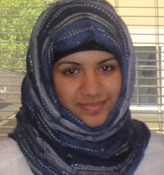The Effect of Contrast Agents On Dose Calculations in Volumetric Radiotherapy for Critical Structures
S Almohsen*, A Elawadi, M Alshanqity, H Alassaf, R ELGENDY, H Allazkani, R Mohamed, King Fahad Medical City, Riyadh, Saudi Arabia, Mansoura University, Faculty of Medicine, Oncology and Nuclear Medicine Dept., Egypt
Presentations
PO-GePV-T-294 (Sunday, 7/25/2021) [Eastern Time (GMT-4)]
Purpose: Accuracy of radiotherapy dose calculation requires high quality CT imaging while tissue delineation may require the use of Contrast Agents (CA). It is wildly accepted practice to acquire two sets of CT images in radiotherapy CT simulators, one with contrast and another with no contrast. This study aims to evaluate the effect of CA on the dose calculations in critical structures and planning target volumes (PTV).
Methods: Two hundred and twenty-six patients’ Volumetric Modulated Arc Therapy (VMAT) plans of different cancer sites (Brain, Head and Neck (H&N), Chest, Abdomen, and Pelvis) were evaluated in this study. Selection criteria included all VMAT patients that had planning CT with contrast (CCT) and non-contrast CT (NCCT) at the same time. Approved treatment plans were recalculated using CCT without any further changes, then compared to NCCT. The variation in Hounsfield Units (HU) and dose distributions for critical structures and PTV’s were analyzed using absolute HU values, relative dose values, D2%, D98%, and 3D-gamma analysis.
Results: HU variation due to CA were statistically significant (p-value˂0.05) for the majority of critical structures and PTVs. However, this was not clinically significant as the variation in HU values was within 40 HU. Variation in PTV D2% and D98% values was insignificant for all sites except in Brain and Nasopharynx. Relative dose maximum difference was ≤2% for the majority of critical structures. Minimum, maximum, mean, and median values for D2% and D98% were within 1.5%. Gamma analysis results revealed that 202 and 18 patients passed with 2%/2mm, 3%/3mm, criteria respectively, other 6 patients failed.
Conclusion: CCT could be acquired for VMAT radiotherapy planning purposes instead of NCCT, since there is no clinically significant difference between dose calculations based on either image set.
Keywords
Not Applicable / None Entered.
Taxonomy
Not Applicable / None Entered.
Contact Email



